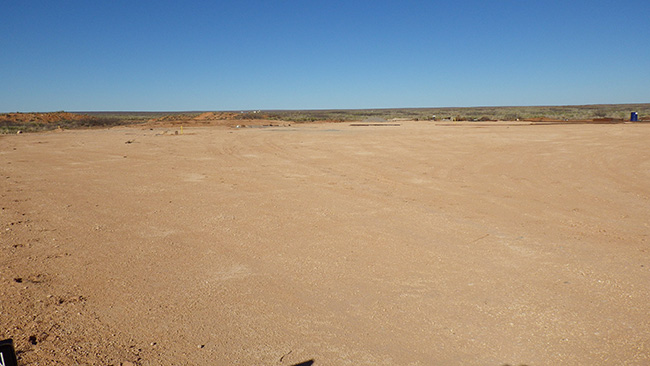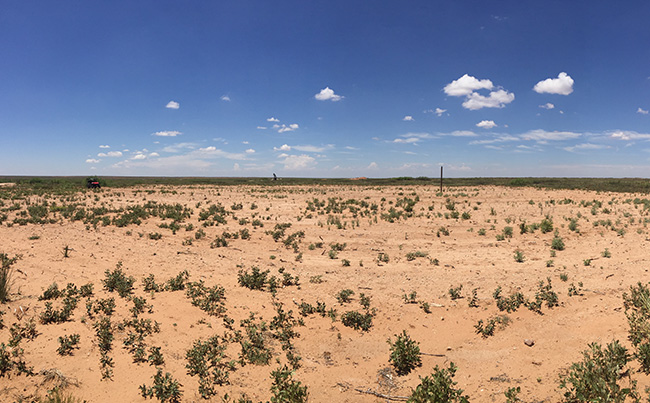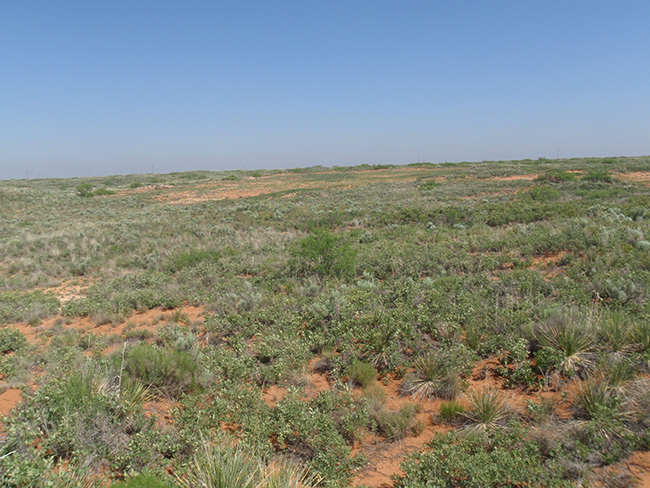Reclamation Efforts in BLM New Mexico
The BLM New Mexico encompasses New Mexico, Oklahoma, Texas, and Kansas with one of the largest oil and gas programs in the Bureau. Employees oversee and manage over 45 million acres of Federal oil, natural gas, and minerals, plus 2 million acres of Native American mineral estate. This area includes the San Juan Basin and Permian Basin, two of the most productive basins in the United States. With one of largest oil and gas programs in the Bureau, BLM New Mexico recognizes its responsibility to monitor, plug, and reclaim abandoned oil and gas wells. The BLM New Mexico strives to conduct timely reclamation that leaves the disturbed site re-contoured and re-vegetated, and will continue to monitor reclamation until the disturbed surface is determined to be successfully reclaimed.
Featured Success
A reclamation plan is included as part of every application for permit to drill (APD) processed in BLM New Mexico Field Offices. Pictured is one of the many reclamation success stories located in southeast New Mexico. Timely reclamation and environmental inspections lead to the revitalized ecosystem at the location of the original well pad.

BLM New Mexico requires companies to begin final reclamation upon plugging of the well. Plugging a well is the first step to final reclamation and ensures that the well has been properly sealed. Reclamation steps consist of removing well and facility structures and equipment, removing well pad and road surfacing material, re-contouring the surface to match the surrounding topography, re-spreading stockpiled topsoil, and seeding the location with desirable native plant species.

Multiple environmental inspections are conducted to monitor the reclamation efforts following the plugging of the well. Pictured is a site in southern New Mexico in the first stage of reclamation; it has already begun to experience revegetation with native species such as Shinnery Oak. The vegetation growth is impressive given that this location is in the Chihuahuan Desert and experiences less than 13 inches of rainfall annually. To ensure that a vegetative stand of desirable species is sufficient to sustain the reclamation efforts, control erosion and non-native plant invasion, and re-establish wildlife habitat or forage production, sites such as this will require additional environmental inspections. Once the BLM has determined that a site has been successfully reclaimed, the agency approves a final abandonment notice, moving the well into the final stage of abandonment. These notices are typically issued after several growing seasons to ensure that vegetative growth is sufficient.

